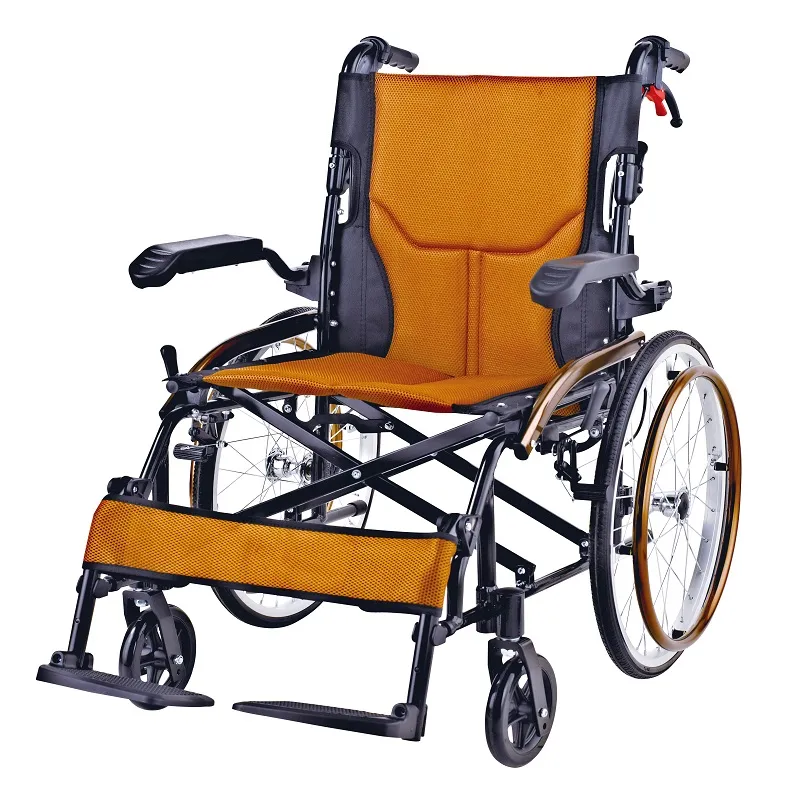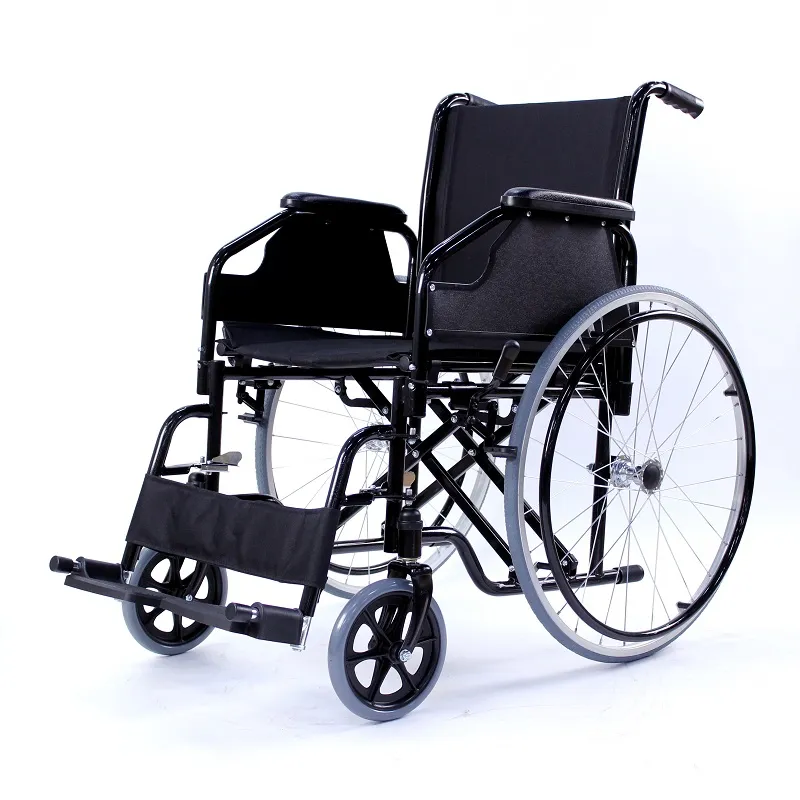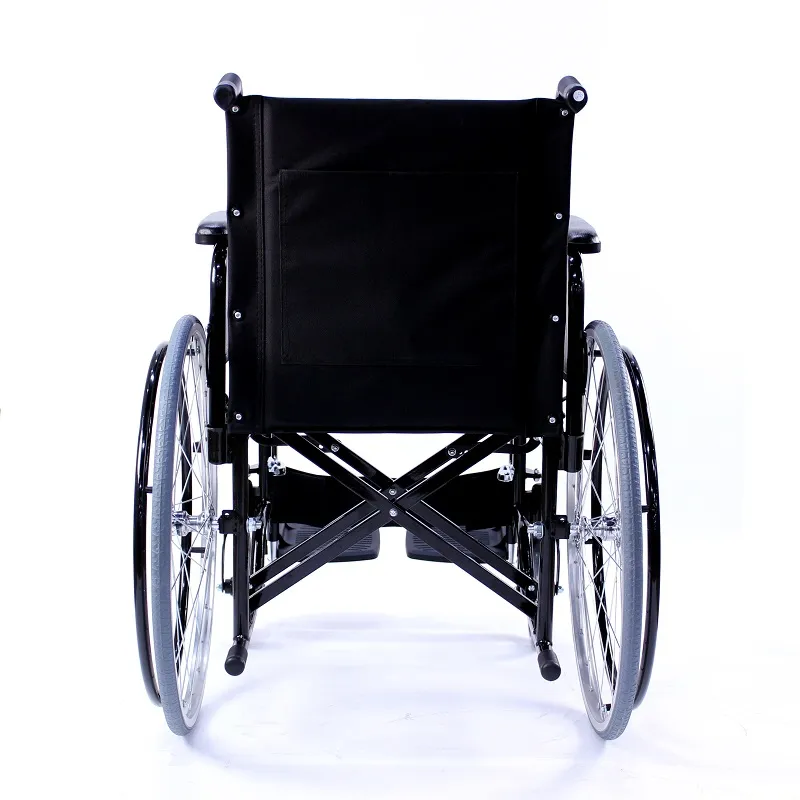In China, over 25 million elderly, disabled, and rehabilitation patients rely on wheelchairs for mobility. As one of the most common assistive mobility devices, manual wheel chairs are widely used in hospitals, homes, and communities due to their simple structure and cost-effectiveness.
Prolonged use of manual wheel chairs, especially those without professional evaluation or those using traditional designs, often leads to a range of physical injuries and chronic health problems.
According to a survey jointly released by the Chinese Association of Rehabilitation Medicine and Beijing Jishuitan Hospital, over 68% of manual wheelchair users experienced varying degrees of chronic injury symptoms after more than three years of use, with shoulder injuries, spinal deformities, pressure sores, and carpal tunnel syndrome being the most common.
This article will systematically analyze the types, formation mechanisms, and prevention strategies of common injuries to manual wheelchair users from a medical perspective, providing professional decision-making references for users.

What are the side effects of prolonged use of a manual wheelchair?
Side effects of prolonged use of manual wheelchairs include:
1. Rotator cuff injury: the most common sports injury
2. Carpal tunnel syndrome: a often overlooked chronic nerve compression
3. Scoliosis and lower back pain: bone damage caused by improper posture
4. Pressure sores and skin abrasions: a result of prolonged sitting
1. Rotator cuff injury: the most common sports injury
Because traditional manual wheel chairs rely on upper limb propulsion, users need to perform hundreds of repetitive propulsion movements daily, placing a heavy load on the shoulders. Prolonged repetitive use of the shoulder muscles, especially the rotator cuff muscles (including the supraspinatus, infraspinatus, subscapularis, and teres minor), easily leads to chronic strain, resulting in:
· Pain and limited mobility;
· Difficulty falling asleep at night;
· Decreased shoulder strength.
Clinical data shows that over 52% of long-term manual wheelchair users have varying degrees of rotator cuff inflammation or tendon tears, with elderly patients and those with pre-existing upper limb weakness at higher risk.
2. Carpal Tunnel Syndrome: Often Overlooked Chronic Nerve Compression
The wrist joint is another frequently compressed area during the use of a manual wheelchair, especially when pushing, adjusting the seat, or moving the wheelchair.
Prolonged and repetitive use leading to nerve compression in the wrist can easily result in carpal tunnel syndrome, manifesting as:
· Numbness and tingling in the fingers;
· Weakness in the hand and decreased grip strength;
· Impaired fine motor skills (such as difficulty writing or buttoning).
Studies have found that the incidence is higher among female wheelchair users, diabetic patients, and those who use ergonomically designed manual wheel chairs.
3. Scoliosis and Lower Back Pain: Improper Posture Leading to Bone Damage
Prolonged use of a manual wheelchair without professional posture intervention can easily lead to:
· Pelvic tilt;
· Compensatory tension in the back muscles;
· Changes in the physiological curvature of the cervical and lumbar spine.
Over time, users may develop scoliosis, kyphosis, and chronic lower back pain. Studies indicate that 34% of manual wheelchair users have moderate to severe spinal deformities, significantly impacting their quality of life.
4. Pressure Ulcers and Skin Abrasions: The Consequences of Prolonged Sitting
Although many users have installed cushioned or ventilated seats, traditional manual wheel chairs still struggle to completely avoid:
· Pressure ischemia in the hips and ischial tuberosities;
· Prolonged exposure to heat and moisture on the skin;
· Local tissue necrosis, leading to pressure ulcers.
Once pressure ulcers form, they are extremely difficult to heal, prone to secondary infections, and can even lead to serious complications such as sepsis and amputation. The risk is highest for paralyzed individuals and the elderly.

How are these injuries overlooked?
Most manual wheelchair users share a common misconception about these injuries: they believe "a little pain is nothing" or "it will go away on its own."
Furthermore, the high prevalence of manual wheelchairs means that many hospitals and communities provide standardized models lacking individualized design, often forcing users to passively accept unsuitable seat structures.
On the other hand, the lack of rehabilitation guidance at the grassroots level and the lack of scientific education among caregivers and family members lead to long-term accumulated injuries being mistakenly attributed to "normal aging" rather than improper use of the equipment.
Lightweight Folding Manual Wheelchairs: Reducing Injuries Through Structural Design
In recent years, with the development of rehabilitation engineering, a more ergonomic device—the lightweight folding manual wheelchair—has gradually gained attention. These wheelchairs, with their high adaptability, shock-absorbing design, and ergonomic principles, provide users with a more comfortable and safer experience.
1. What is a Lightweight Folding Manual Wheelchair?
A lightweight folding manual wheelchair is a manual wheelchair made of lightweight materials such as aluminum alloy and carbon fiber. It can be folded with a single button, is compact, and lightweight (typically between 8 and 13 kg). Its features include:
· Adjustable backrest, footrests, and seat depth;
· Conforming to the physiological curves of the human sitting posture;
· Equipped with anti-tilt wheels, handbrake, and shock absorption system;
· Breathable seat cushion and pressure sore prevention function.
These structural optimizations directly affect multiple key parts of the user's body, effectively reducing shoulder burden, protecting the wrist joint, maintaining spinal stability, and reducing the risk of pressure sores.
2. How do lightweight folding manual wheel chairs reduce injuries?
(1) Reduced Shoulder Pressure: Mechanical Optimization Reduces Propulsion Burden
High-end lightweight folding manual wheel chairs typically employ large rear wheels and high-rolling-efficiency bearings, requiring users to exert less force for propulsion. This design significantly reduces the load on the rotator cuff and the frequency of repetitive movements, reducing chronic shoulder strain at its source.
Furthermore, some products support "assisted wheel rim" technology, utilizing elastic damping feedback to further reduce the impact force during propulsion.
(2) Wrist Joint Protection: Adjustable Armrests and Reasonable Distribution of Control Distance
Traditional wheelchairs often lack adjustable armrests and seat height, leading to excessive flexion or abduction of the user's wrist joint. Lightweight folding manual wheelchairs feature adjustable armrest height, preventing the wrist from becoming "stuck at an angle," and their design allows for natural extension of the palm, forearm, and wheel rim, helping to avoid nerve compression injuries.
(3) Maintaining Spinal Health: Integrated Adjustment of Backrest Angle and Seat Support
The backrest of lightweight folding manual wheelchairs typically supports adjustment within a range of 110° to 140°, effectively distributing pressure on the lower back; and through detailed optimizations such as double-layer breathable seat cushions and lumbar support, it effectively prevents spinal fatigue and deformation caused by prolonged sitting.
Some brands have also introduced a "dynamic seat cushion" system, simulating micro-displacement to further reduce the accumulation of pressure at single points.
(4) Reducing the Incidence of Pressure Ulcers: Dual Protection of Breathability and Pressure-Reducing Technology
The new generation of lightweight folding manual wheel chairs widely uses honeycomb breathable cushions and high-elastic EVA pressure-reducing materials to avoid prolonged pressure on the buttocks. In addition, the back ventilation mesh design reduces the risk of skin lesions caused by moisture and increased temperature.
It can be equipped with an intelligent body pressure monitoring system to remind users to change their sitting posture in real time, which is an important technological trend in pressure ulcer prevention.

Rehabilitation Expert: From "Choosing a Wheelchair" to "Scientific Assessment + Customization"
Professor Chen Wei, Director of the Wheelchair Committee of the Chinese Association of Rehabilitation Medicine, points out:
"A wheelchair is not just 'a chair,' it's the user's second 'spine.' Everyone's body type, muscle condition, and disease type are different; correctly choosing the model, structure, and function is crucial to preventing long-term use injuries."
He suggests that every manual wheelchair user should undergo a professional assessment by a rehabilitation physician, physical therapist, or assistive device engineer before purchasing, making a comprehensive decision based on their living environment, physical condition, and financial capabilities.
Choosing the Right Wheelchair is Far More Important Than You Think
"What are the most common injuries among manual wheelchair users?" The answer to this question reflects countless individuals experiencing a decline in quality of life and neglected suffering. The emergence of lightweight folding manual wheel chairs signifies that wheelchairs are not only a means of transportation but also an integral part of a health support system.
In today's society where wheelchair use has become commonplace, we should focus more on: choosing the right wheelchair is more important than simply relying on it.

Can Dayang Medical support bulk purchasing?
Yes, bulk purchasing is one of our specialties. Our factory in Foshan has two advanced production bases, allowing us to handle large wholesale orders of wheelchairs, beds, and walking aids. We provide cheap prices and discount promotions for high-volume clients, while maintaining high quality production.
Many medical equipment brands and companies purchase from Dayang Medical because we combine low prices, customized options, and reliable manufacturing into a single solution.










